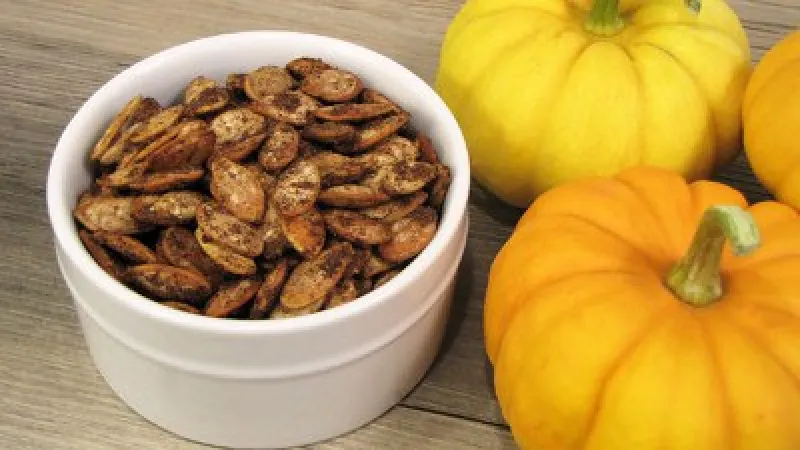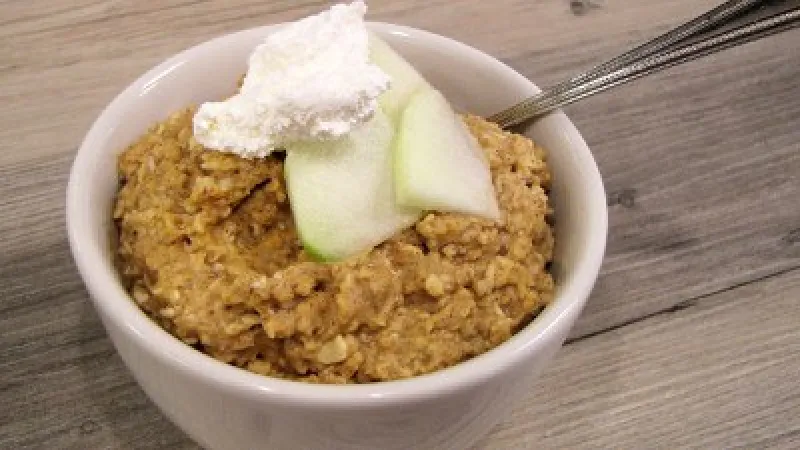Cinnamon and Sugar Roasted Pumpkin Seeds
1 c. pumpkin seeds
1 Tbsp. melted butter (or substitute cooking oil)
1 Tbsp. sugar
¾ tsp. cinnamon
¼ tsp. nutmeg
dash of salt
Preheat oven to 300 F. Toss seeds with melted butter or oil. Mix dry ingredients and sprinkle over seeds; toss. Line a well-greased baking sheet with seed mixture and bake for approximately 50 minutes. Stir and mix the seeds often to keep them from burning and sticking. Bake until browned.
Makes eight (2 tablespoon) servings. Each serving has 170 calories, 14 g fat, 7 g protein, 7 g carbohydrate, 1 g fiber and 5 mg sodium.
Pumpkin Pie Oatmeal
2 c. quick-cooking oats
1¼ c. milk
¾ c. cooked pumpkin (canned or fresh)
1 Tbsp. brown sugar
2 tsp. pumpkin pie spice
Pinch of salt
Optional toppings (chopped walnuts, butterscotch or white chocolate chips, whipped topping)
In a microwave-safe bowl, whisk together all of the ingredients except for the optional toppings. Microwave on high for approximately two minutes, or until oatmeal reaches the desired consistency. For thinner oatmeal, add more milk; for thicker, add less milk. Allow to stand approximately one minute and serve hot. Top with desired toppings.
Makes four servings. Each serving (before optional toppings) has 210 calories, 4 g fat, 7 g protein, 37 g carbohydrate, 6 g fiber and 60 mg sodium.
Key to abbreviations
c. = cup oz. = ounce
tsp. = teaspoon g = gram
Tbsp. = tablespoon mg = milligram
Funding for this publication was made possible by the U.S. Department of Agriculture’s Agricultural Marketing Service through grant AM170100XXXXG005.
Its contents are solely the responsibility of the authors and do not necessarily represent the official views of the USDA.

